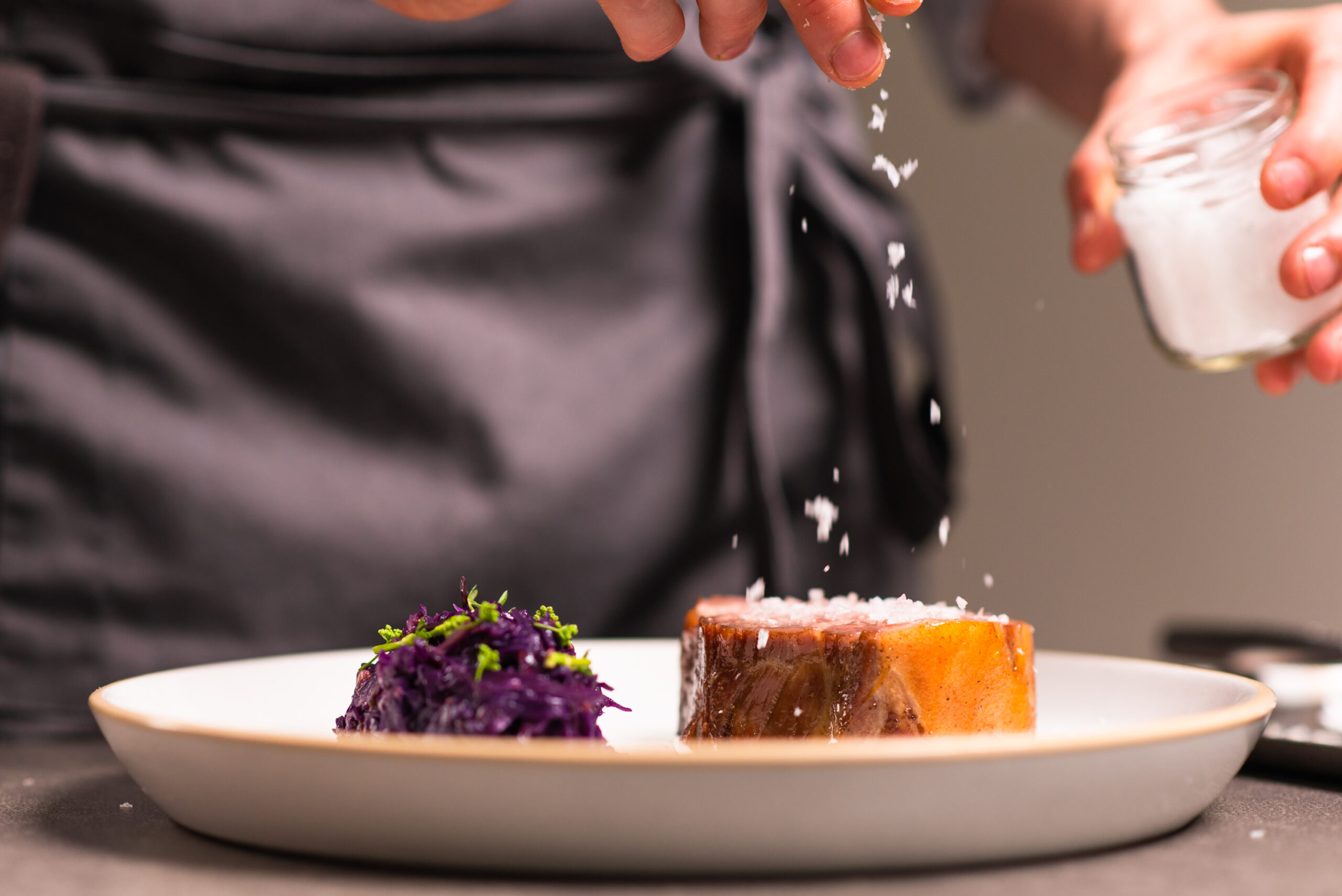9 Steps to Perfect Crispy-Skinned Fish
Crispy fish skin that shatters over perfectly flakey, just-cooked fish that melts like butter underneath, is one of the greatest culinary pleasures I can think of. The contrast of texture and flavour between the skin and the flesh is incredible when done right. These pleasures should not be something you can only enjoy when you go to eat at a fancy restaurant either. The steps I’m going to illustrate aren’t hard to follow and are straight forward to perfect. On top of all that, it’s incredibly quick to put together. Cooking fish like this, paired with a simple salad, could be one of the quickest weeknight meals you can put together!
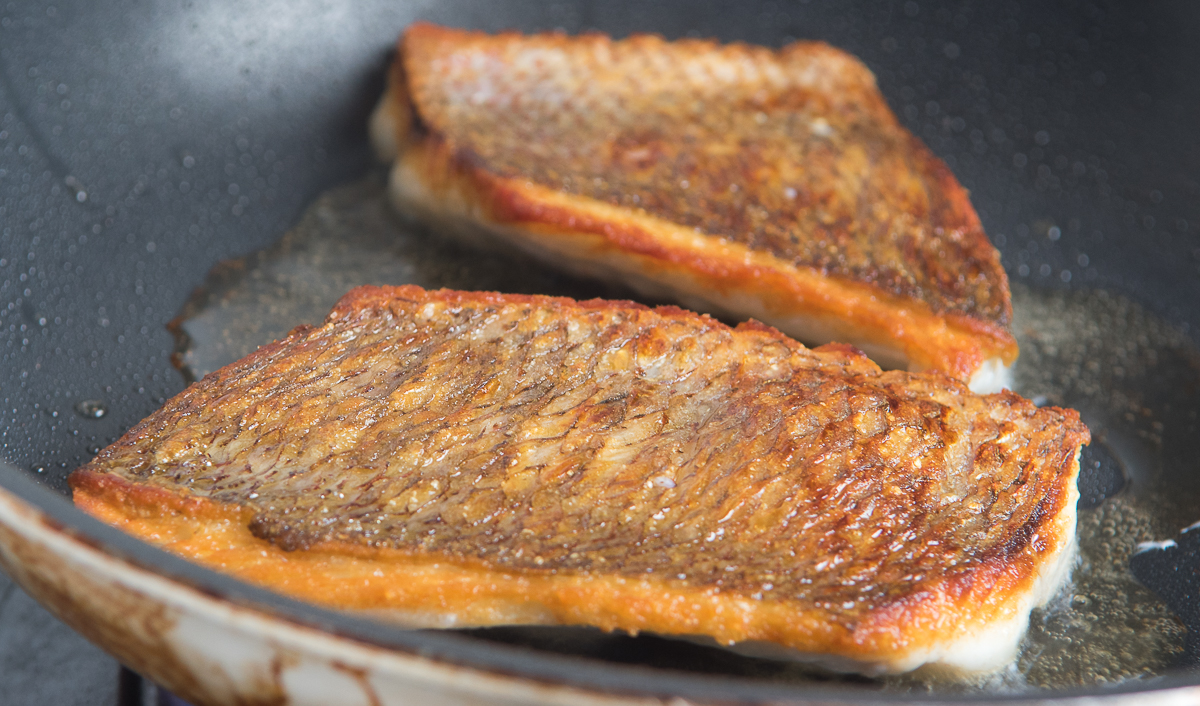
1. Source fresh fish and keep it cool
It goes without saying whenever you’re dealing with fish, but always look out for fresh looking fish. Develop a relationship with a fishmonger you can trust. Either pick out the whole fish and ask for them to be filleted in front of you or take them home to fillet them yourself. Nobody likes picking bones out of their fish. You should also ask your fish butcher to pinbone the fish for you or do it yourself with a pair of fish tweezers.
When choosing a fish you want to look out for a few key things:
- bright eyes
- shiny scales
- in-tact fins
- red gills free of slime
- Flesh that springs back when lightly prodded
- A fish that smells like the sea (as opposed to the back end of a fishmongers van)
Transport this from your fishmonger to your home fridge using a cooler and ask for some ice to keep the fish cool for the journey. Warm temperatures will loosen the delicate layers of fat in the flesh of the fish and ruin its texture. Once safely at home, store in the coolest section of your fridge.
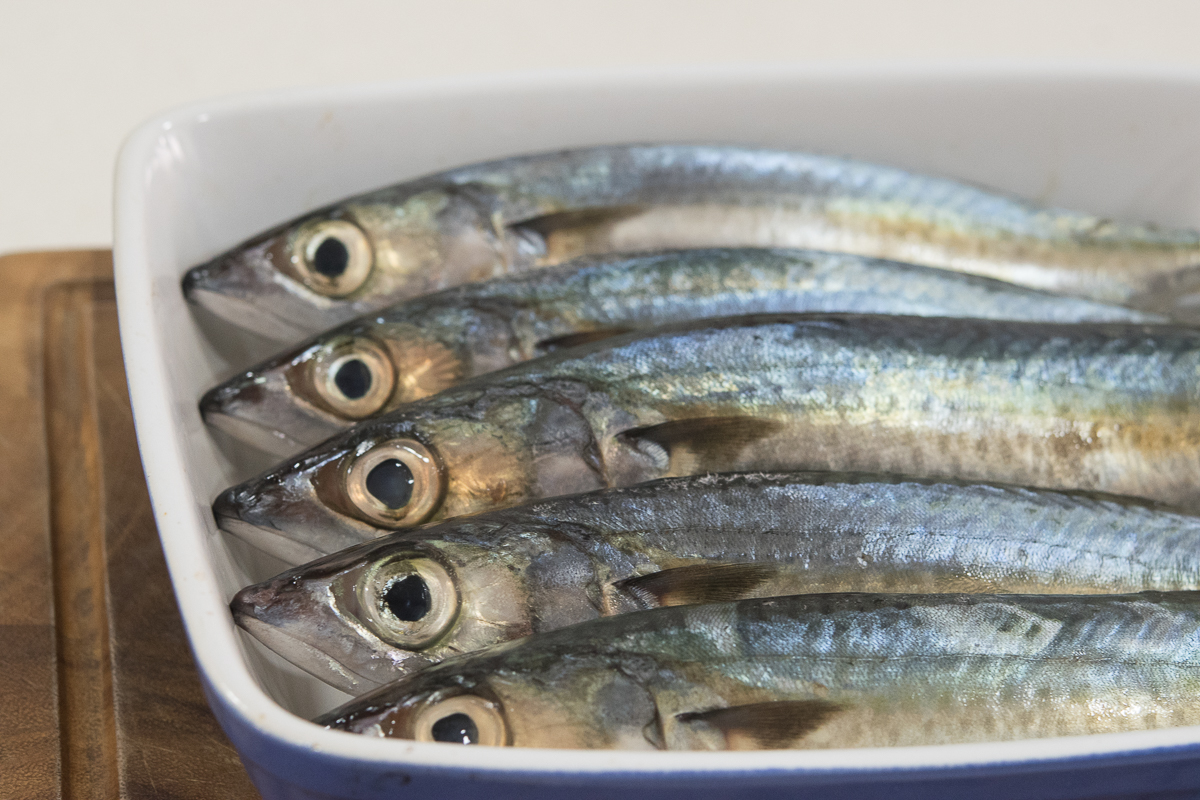
2. Keep the skin dry
Store your fish fillets in the fridge skin side up on some absorbent paper kitchen towel and keep them uncovered. Pat the surface dry with a paper towel before storing. This will slowly dry out the surface moisture of the skin which will allow you to get better colour on your fish. It also has another benefit in that dry fish will spoil a lot slower than fish that is wet.
If you bring your fish home and keep it in a damp plastic bag straight from the fishmonger, your fish will rapidly degrade in quality. With the dry storage method you can keep your fish in the fridge for 2 days comfortably without worrying about losing quality.
3. Bring your fish to room temperature before cooking
Do not confuse this with forgetting your fish on the counter and leaving it sitting there for long enough that it starts to smell. Leave your fillets on the counter for 20-40 minutes to come to room temperature. This will make it easier to cook through evenly because the centre won’t be ice cold. Additionally the cold skin and flesh will curl up rapidly once it hits the hot pan, a room temperature fillet is less likely to do so. When the skin of the fish makes better contact with the pan, you get a more even colour.
4. Season well with salt. Only.
Sprinkle your salt from a height so that the crystals will distribute more evenly over your fish. Season in this way on both sides of the fish just before you are going to lay the fish into the pan. I avoid adding pepper when using this method as the temperature needed for crispy skin is relatively high and many spices will blacken and burn, pepper included.
5. Choose the right pan for the job
Fish skin can be delicate stuff so I would recommend some sort of non-stick surface to make your life easier. A purpose built non-stick pan will cook fish effortlessly. The skin will slide around the pan with minimal amounts of oil. Cast iron is an excellent alternative here as it can take a beautiful non-stick sheen if well seasoned but also holds on to heat exceptionally well. When using cast iron be sure to monitor your heat closely. These pans can get very hot and could burn the fish before it’s cooked.
Alternatively use whatever pan you have and place a square of baking paper large enough for your fish to fit on, into the middle of the pan. Oil the baking paper as if it was the surface of your pan and fry directly on to it. The greaseproof surface acts like a fantastic non-stick layer to even the gnarliest of pans.
6. Apply even pressure to the fillets
This is the key to allowing thin fillets to cook through easily so that the surface of the skin is always making direct contact with the pan. You have 3 options of how to do this. The cheapest of which would be to push your spatula down on the fillets as they cook. Be mindful when using this method as it’s easy to add uneven pressure and squish your fish or not apply enough pressure and the skin won’t cook evenly.
Second option is to use a smaller pan the one you are cooking in,and sit it on top of the fillets as shown in the picture below. Be sure to choose something clean and non-reactive like stainless steel. Rest this on top of the fillets and you should get an even distribution of pressure. Thirdly, use purpose made food weights. These are handy tools to have around for meat and fish cookery and are made for the job.
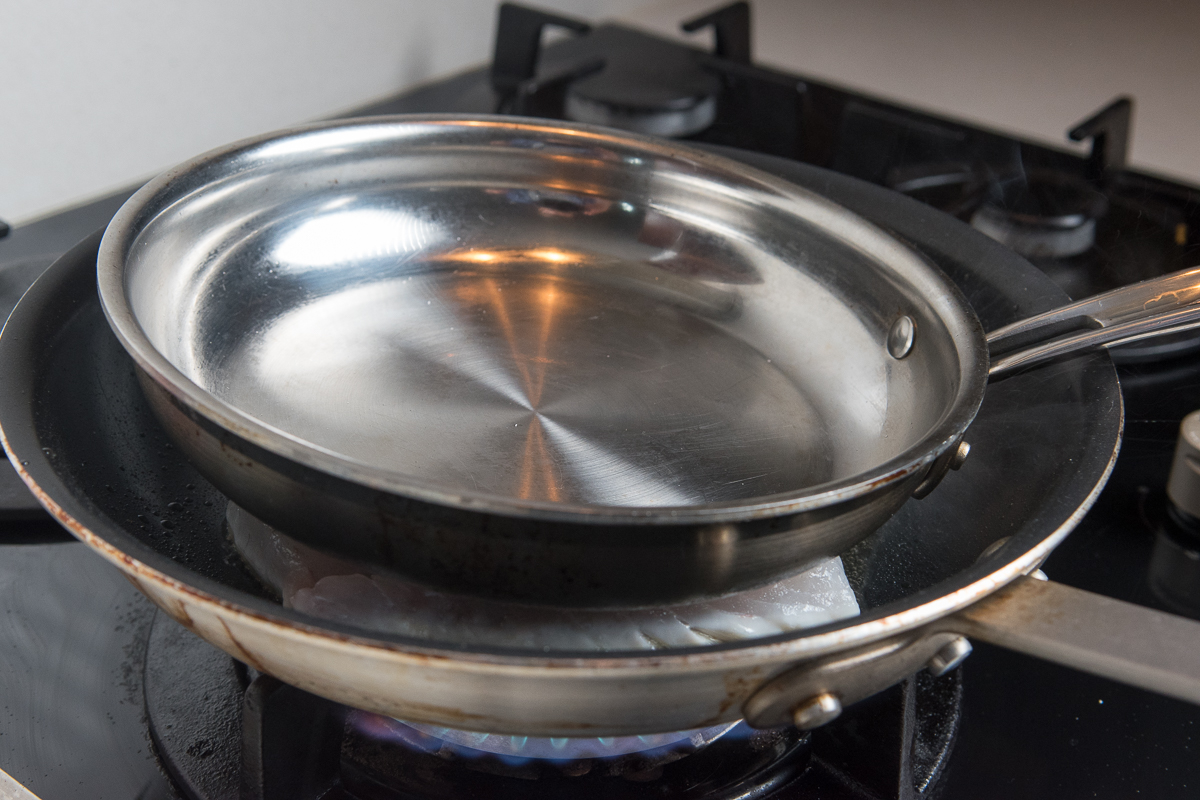
7. Cook the fish 80% through on the skin
Remember the goal – crispy skin and buttery flesh. To achieve this we are going to get most of the cooking done on the skin-side before flipping it over. The delicate flesh of the fish is protected by the skin, but will still gently cook through while this happens. We’ll turn the fish over once it is almost completely cooked through to quickly flash the other side.
This is only true for thin fillets of fish. For a thicker piece of fish, like a large tranche of salmon, Cook it 1/3rd of the way through on the stove, on the skin side. Then place the entire pan in the oven, skin side down, to continue cooking until warmed through.
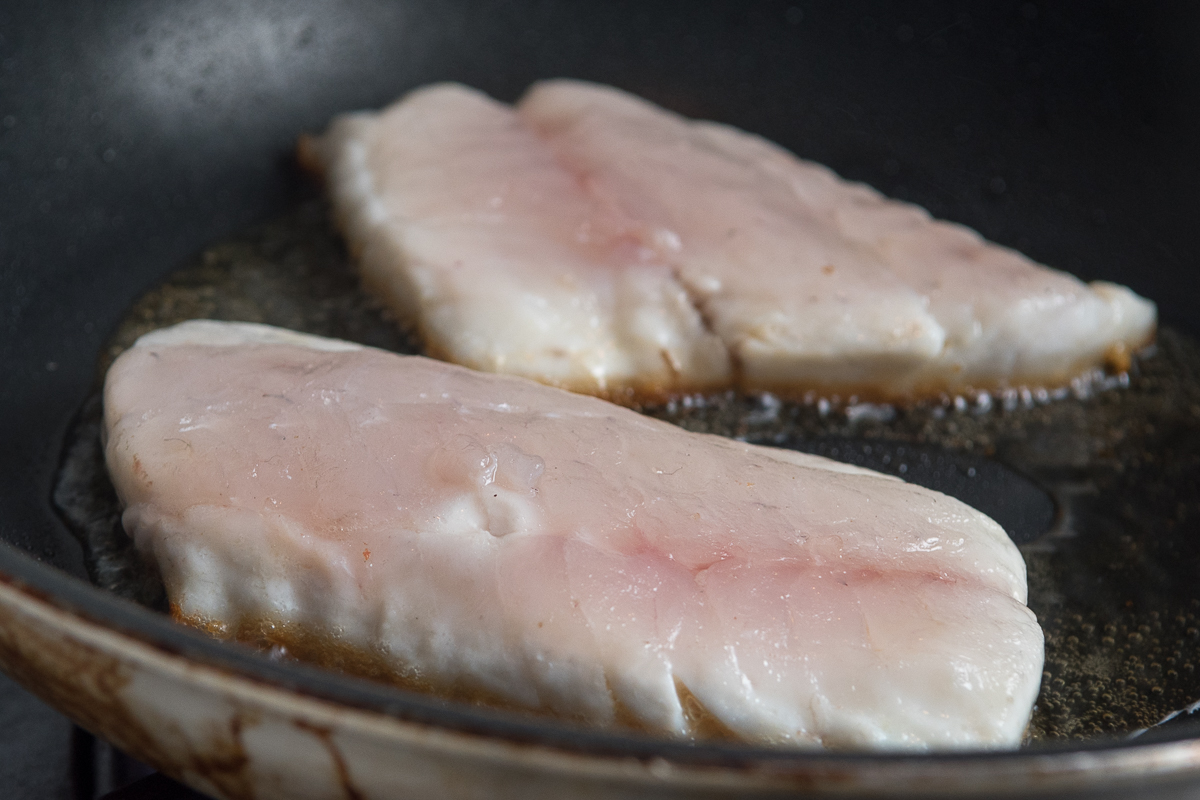

8. Serve immediately
Once flipped and removed, place onto a tray lined with kitchen paper to drain off any extra cooking oil from the bottom of the fish and serve immediately. This means you should have your garnishes plated before or while you are cooking your fish. The skin will lose it’s crunch over time, the flesh will lose moisture and cool down. You have a few minutes where the fish is at its absolute best, don’t waste it!
That was very informative, but could I just get a recipe and move on with my day?
Yes, shortly.
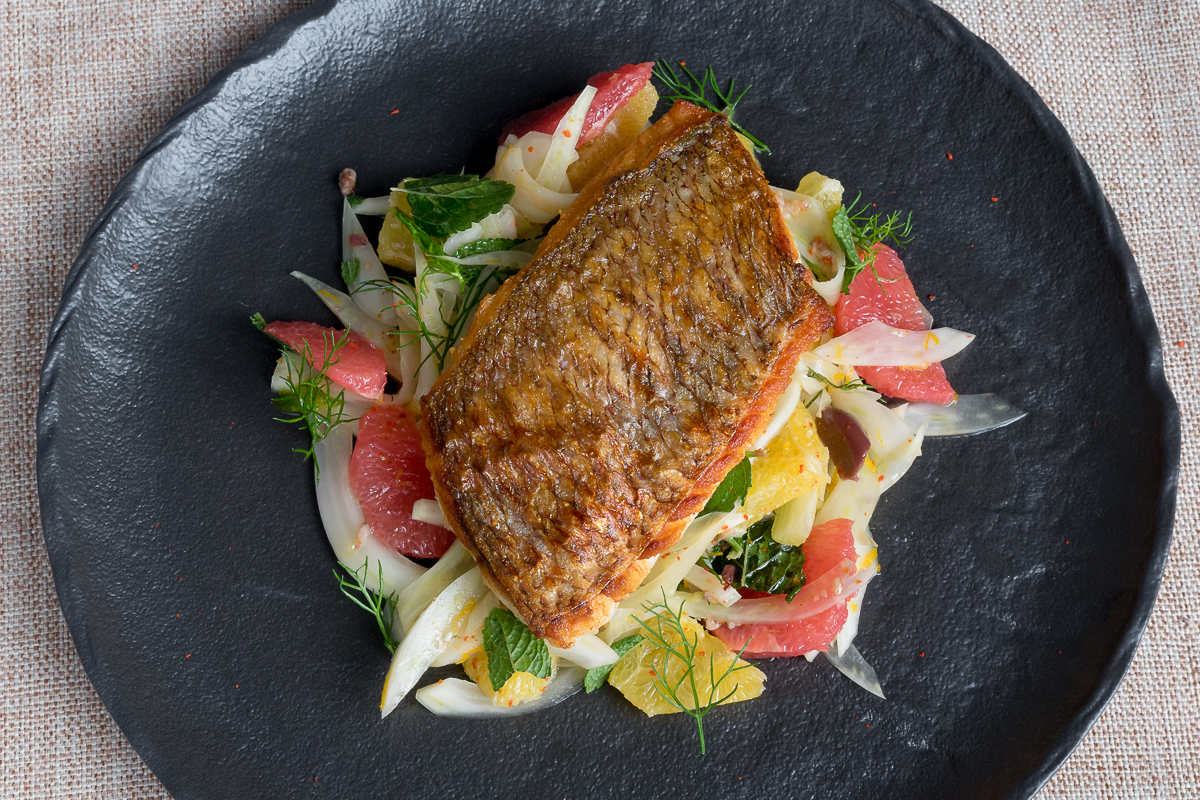
Hungry for more chef secrets?
If you found the tips in this article useful and are hungry to discover more chef secrets you can download my free ebook, Pantry Essentials for Maximum Flavour by signing up below. Stock yourself with these flavour bombs and learn to season like a chef to turn even the most mundane of meals into exceptional ones!
